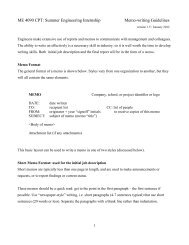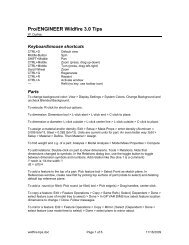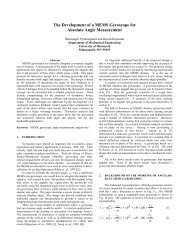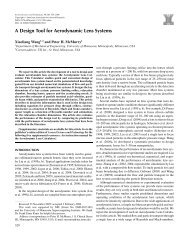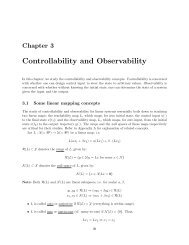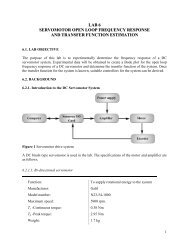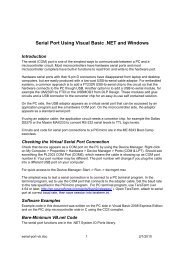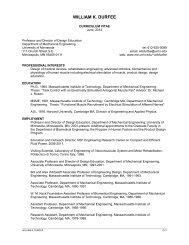Design and Usability of a Home Telerehabilitation System to Train ...
Design and Usability of a Home Telerehabilitation System to Train ...
Design and Usability of a Home Telerehabilitation System to Train ...
Create successful ePaper yourself
Turn your PDF publications into a flip-book with our unique Google optimized e-Paper software.
2 SYSTEM DESCRIPTION<br />
2.1 Overview<br />
The Track<strong>Train</strong> home tracking system has two cus<strong>to</strong>m bilateral electrogoniometers that sense<br />
wrist <strong>and</strong> finger flexion <strong>and</strong> extension motions, a microcontroller-based interface box, a<br />
lap<strong>to</strong>p computer with tracking s<strong>of</strong>tware, a cell phone, a web cam, <strong>and</strong> a l<strong>and</strong> line telephone<br />
switch box (Figure 1). The system is designed for self installation in the patient’s home, or for<br />
installation by the therapist. While the system has many individual components, it is still<br />
relatively compact <strong>and</strong> fits easily on a desk<strong>to</strong>p or table without being an overly obtrusive<br />
presence in the patient’s home.<br />
2.2 H<strong>and</strong> Sensors<br />
<br />
The h<strong>and</strong> sensor has three platforms connected by rotating links, all made <strong>of</strong> polycarbonate.<br />
The sensor measures flexion <strong>and</strong> extension <strong>of</strong> the wrist <strong>and</strong> first MCP joints (Figure 2). The<br />
links form two four-bar mechanisms that transfer finger <strong>and</strong> wrist joint motion <strong>to</strong> two 0.5<br />
inch, 1.0K potentiometers (ETI <strong>System</strong>s, SP12S-1K) located on the platforms. This design<br />
was chosen over potentiometers axially aligned with the joint because it afforded higher<br />
<strong>to</strong>lerance <strong>to</strong> placement location. Because the linkage straddles the joint, the two platforms at<br />
either end need only be on opposite sides <strong>of</strong> the joint <strong>and</strong> do not require precise placement.<br />
This is particularly important for a sensor that was designed <strong>to</strong> be self-donned by the patient.<br />
The links are designed <strong>to</strong> rotate relative <strong>to</strong> one another in the plane <strong>of</strong> the platforms which<br />
allows the sensor <strong>to</strong> fit multiple h<strong>and</strong>s as the angle between the axis <strong>of</strong> the wrist <strong>and</strong> the axis<br />
<strong>of</strong> the forefinger differs between people. The sensor dimensions were determined by sampling<br />
Track-JBiomechEng.doc Page 8 <strong>of</strong> 31



